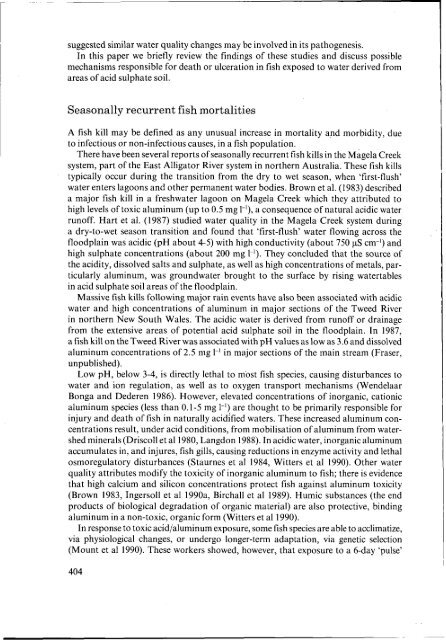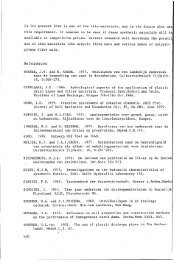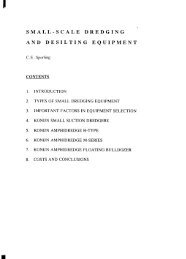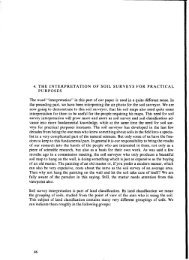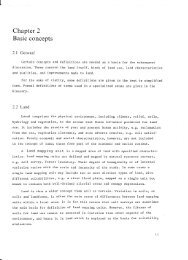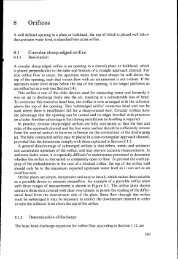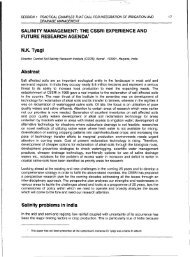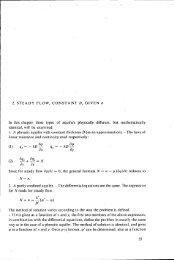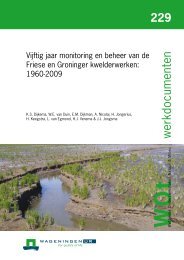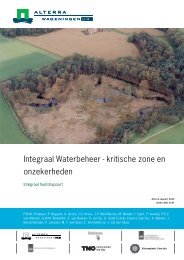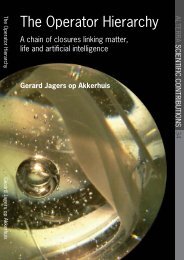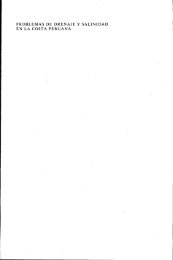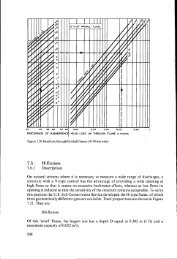Environmental aspects of acid sulphate soils - ROOT of content
Environmental aspects of acid sulphate soils - ROOT of content
Environmental aspects of acid sulphate soils - ROOT of content
Create successful ePaper yourself
Turn your PDF publications into a flip-book with our unique Google optimized e-Paper software.
suggested similar water quality changes may be involved in its pathogenesis.In this paper we briefly review the findings <strong>of</strong> these studies and discuss possiblemechanisms responsible for death or ulceration in fish exposed to water derived fromareas <strong>of</strong> <strong>acid</strong> <strong>sulphate</strong> soil.Seasonally recurrent fish mortalitiesA fish kill may be defined as any unusual increase in mortality and morbidity, dueto infectious or non-infectious causes, in a fish population.There have been several reports <strong>of</strong> seasonally recurrent fish kills in the Magela Creeksystem, part <strong>of</strong> the East Alligator River system in northern Australia. These fish killstypically occur during the transition from the dry to wet season, when ‘first-flush’water enters lagoons and other permanent water bodies. Brown et al. (1983) describeda major fish kill in a freshwater lagoon on Magela Creek which they attributed tohigh levels <strong>of</strong> toxic aluminum (up to 0.5 mg 1-I), a consequence <strong>of</strong> natural <strong>acid</strong>ic waterrun<strong>of</strong>f. Hart et al. (1987) studied water quality in the Magela Creek system duringa dry-to-wet season transition and found that ‘first-flush’ water flowing across thefloodplain was <strong>acid</strong>ic (pH about 4-5) with high conductivity (about 750 pS cm-’) andhigh <strong>sulphate</strong> concentrations (about 200 mg 1-I). They concluded that the source <strong>of</strong>the <strong>acid</strong>ity, dissolved salts and <strong>sulphate</strong>, as well as high concentrations <strong>of</strong> metals, particularlyaluminum, was groundwater brought to the surface by rising watertablesin <strong>acid</strong> <strong>sulphate</strong> soil areas <strong>of</strong> the floodplain.Massive fish kills following major rain events have also been associated with <strong>acid</strong>icwater and high concentrations <strong>of</strong> aluminum in major sections <strong>of</strong> the Tweed Riverin northern New South Wales. The <strong>acid</strong>ic water is derived from run<strong>of</strong>f or drainagefrom the extensive areas <strong>of</strong> potential <strong>acid</strong> <strong>sulphate</strong> soil in the floodplain. In 1987,a fish kill on the Tweed River was associated with pH values as low as 3.6 and dissolvedaluminum concentrations <strong>of</strong> 2.5 mg 1-’ in major sections <strong>of</strong> the main stream (Fraser,unpublished).Low pH, below 3-4, is directly lethal to móst fish species, causing disturbances towater and ion regulation, as well as to oxygen transport mechanisms (WendelaarBonga and Dederen 1986). However, elevated concentrations <strong>of</strong> inorganic, cationicaluminum species (less than 0.1-5 mg 1-I) are thought to be primarily responsible forinjury and death <strong>of</strong> fish in naturally <strong>acid</strong>ified waters. These increased aluminum concentrationsresult, under <strong>acid</strong> conditions, from mobilisation <strong>of</strong> aluminum from watershedminerals (Driscoll et al 1980, Langdon 1988). In <strong>acid</strong>ic water, inorganic aluminumaccumulates in, and injures, fish gills, causing reductions in enzyme activity and lethalosmoregulatory disturbances (Staurnes et al 1984, Witters et al 1990). Other waterquality attributes modify the toxicity <strong>of</strong> inorganic aluminum to fish; there is evidencethat high calcium and silicon concentrations protect fish against aluminum toxicity(Brown 1983, Ingersoll et al 1990a, Birchall et al 1989). Humic substances (the endproducts <strong>of</strong> biological degradation <strong>of</strong> organic material) are also protective, bindingaluminum in a non-toxic, organic form (Witters et al 1990).In response to toxic <strong>acid</strong>/aluminum exposure, some fish species are able to acclimatize,via physiological changes, or undergo longer-term adaptation, via genetic selection(Mount et al 1990). These workers showed, however, that exposure to a 6-day ‘pulse’404


